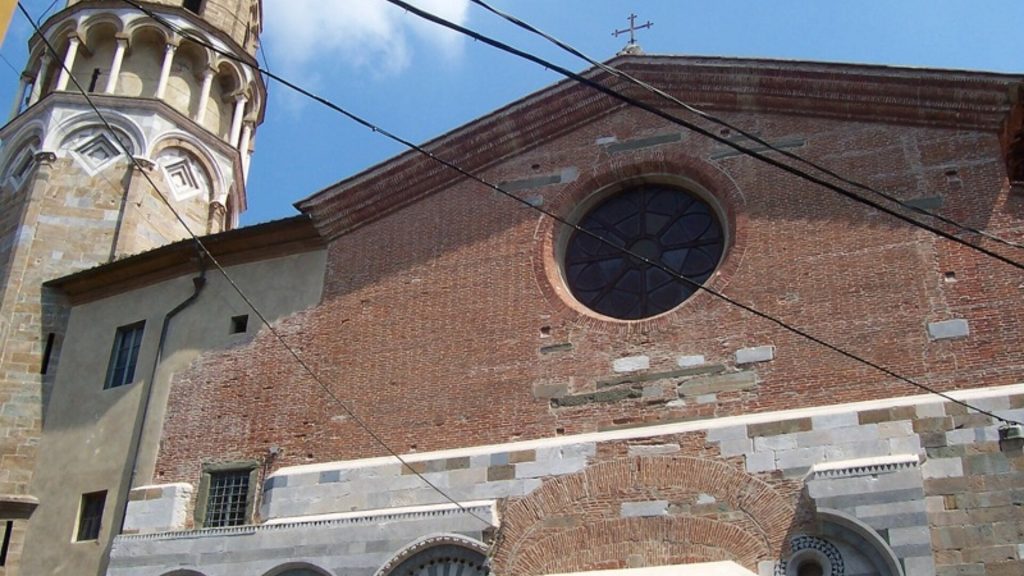One of the most recognizable tourist attractions across the world, the Leaning Tower of Pisa isn’t the only leaning historic structure in Italy. Torre Garisenda in Bologna was built in the 12th century and it has extensive cultural significance. Unfortunately, the collapse of the historic building is a possibility in the future.
Italian authorities have been working hard to prevent the fall of the other leaning tower and here’s the plan they’ve come up with.
The Other Leaning Tower
While Pisa’s tower enjoys worldwide fame, it’s not the only famous leaning construction in Italy.

Torre Garisenda was constructed at a time of rapid growth for the city of Bologna. Only two centuries later, the massive construction started to tilt. Today, the leaning angle has already reached four degrees. In comparison, the Leaning Tower of Pisa’s angle is 3.9 degrees.
A High-Risk Building
Worries about the tower didn’t originate yesterday. Authorities in Bologna have been worried for some time about the integrity of the construction and the safety of people.

In 2023, the streets around the tower were sealed off. The building was classified as a high-risk construction on the verge of collapsing. Researchers reached the conclusion after monitoring the structure and checking for cracking or movement.
An Action Plan Has Been Developed
In March 2024, Bologna’s mayor announced an action plan to fortify Torre Garisenda and prevent its eventual collapse.

A method that was previously used to prevent the collapse of the Leaning Tower of Pisa will be tried on Torre Grasienda. The technique involves the use of pylons and cables to fortify the construction.
Further Restoration Work to Take Place in the Coming Years
The currently announced fortification of Torre Garisenda marks the first step towards the preservation of the historically-significant construction.

Additional restoration and conservation projects will be carried out in 2025 and 2026, Bologna’s mayor said. These additional fortification endeavors are in the phase of planning right now.
A Million-Dollar Preservation Effort
While fortification with pylons and cables sounds simple, it’s a massive project that requires lots of work and resources.

The equipment used to preserve the Leaning Tower of Pisa will have to be adapted for Torre Garisenda. Adjustments will be completed in about six months. The entire safeguarding operation will come with a price tag of about 20 million US dollars (19 million euro).
One of Bologna’s Hallmark Sights
Torre Garisenda is one of the most popular historic buildings in Bologna and it attracts millions of tourists each year.

Together with the nearby Torre degli Asinelli, it’s been shaping up the cityscape for centuries. Slightly over 150-feet tall, the tower had 32 feet of the construction already removed in an attempt to stabilize the building.
No Consensus on Potential Collapse Timeframe
Experts started worrying about the integrity of the tower for the first time in 2022. In October 2023, sensor readings further increased worries about structural movements and a potential collapse.

Interestingly enough, researchers and exerts haven’t reached an agreement about the way events will unfold in the future. There isn’t a consensus about whether the tower will actually collapse and if so, exactly when in the future.
Torre Garisenda: The Inspiration Behind Famous Works of Art
There’s a reason why Torre Garisenda is such an important part of Bolognian and even Italian culture.

The tower is mentioned several times in Dante’s Divine comedy and The Rhymes. These mentions are perceived as evidence of his stay in the city. Goethe also mentions the tower in his Italian Journey. Even Charles Dickens mentions the structure in Pictures from Italy.
Garisenda – Asinelli’s Smaller Twin
Torre Garisenda is a bit shorter and less prominent than Bologna’s other popular tower – Asinelli.

Asinelli Tower has a height of 230 feet. Eventually, the construction was expanded to reach its current height of 319 feet. In the 14th century, the city of Bologna became its owner and started using the tower as a prison. Over the years, the tower has sustained multiple lightning damages. The problem got resolved eventually through the installation of a lightning rod in 1824.
The Two Towers Used to Be Connected
As an interesting urban planning attempt, Bolognian architects got Garisenda and Asinelli towers connected to each other via an aerial footbridge located at about 100 feet above the ground.

The footbridge’s creation is attributed to Duke of Milan Giovanni Visconti’s work. He wanted to control the traffic on the central street and even to suppress eventual uprisings. The footbridge was burned down during a fire in 1398.
Getting Partially Hidden by Expanding Bologna
Through the decades and centuries, various constructions were added to Torre Garisenda, as its ownership and function changed.

Eventually, the building also got hidden by various constructions that were erected nearby. Several commercial buildings, as well as a church were constructed in close proximity, taking away from Torre Garisenda’s prominence. All of these structures were demolished towards the end of the 19th century. That’s also when the municipality of Bologna got ownership of the construction.
Asinelli Tower Is Also a Leaning Wonder
Just like its small sister, Asinelli Tower is also a leaning marvel. At the time being, however, it’s not considered to be an at-risk construction.

In fact, Torre degli Asinelli is open to the public and tourists are free to climb the stairs to its top. There are 498 steps and those brave enough to conquer the physical challenge will get to enjoy the marvelous panorama.
Italy’s 10 Leaning Towers
The three constructions already mentioned aren’t Italy’s only leaning towers. The country is known for 10 constructions that have started tilting through the centuries.

Most of Italy’s leaning towers are located in Venice and Pisa. The Campanile of San Nicola in Pisa is probably the second most famous leaning tower with its distinctive octagonal shape. The Campanile of San Marino Church in Venice also attracts millions of tourists. It has started to lean because of the marshy conditions in the lagoon that is its home.
Leaning Tower of Pisa Has Already Been Saved from a Collapse
In the early 1990s, the Leaning Tower of Pisa reached a tilt degree of 4.5 degrees. That got architects and historic restoration experts incredibly worried about an impending collapse.

The UNESCO World Heritage site got a team of international experts involved in the stabilization efforts. The stabilization project continued for eight years and today, the Leaning Tower of Pisa has been stabilized.






